It was the car chase that brought a nation screeching to a halt.
On June 17, 1994, a white Ford Bronco containing a fugitive O.J. Simpson led a convoy of police cars down southern California’s freeways — and 95 million Americans couldn’t take their eyes off it.
Coverage of massive sporting events like the NBA finals and US Open was interrupted with footage of the chase, while Domino’s Pizza reported record delivery orders from viewers unwilling to miss a single moment.
That moment captured by hovering TV helicopters and breathless newsmen, and broadcast around the world, remains an obsession for some.
But for one viewer, it held a particular fascination.
“We were all huddled around and watching, no one was breathing — we just stood there in complete awe and fascination,” recalled Kim Goldman, in a 2019 podcast marking the 25th anniversary of the chase.
“It was weird because there (were) people hoping that he would kill himself … And my dad and I just didn’t — we wanted him to be brought in and held accountable.”
Five days earlier, Goldman’s brother Ron had been stabbed to death alongside Simpson’s ex-wife, Nicole Brown Simpson.

O.J. Simpson and Nicole Brown Simpson pose at the premiere of the “Naked Gun 33 1/3” in which O.J. starred on March 16, 1994, in Los Angeles, California. (Vinnie Zuffante/Getty Images)

O.J. Simpson’s ex-wife Nicole Brown Simpson, left, and her friend Ron Goldman, both of whom were murdered and found dead in Los Angeles on June 12, 1994. O.J. Simpson was arrested in connection to the murder and acquitted of the crime. (AP Photo/File)
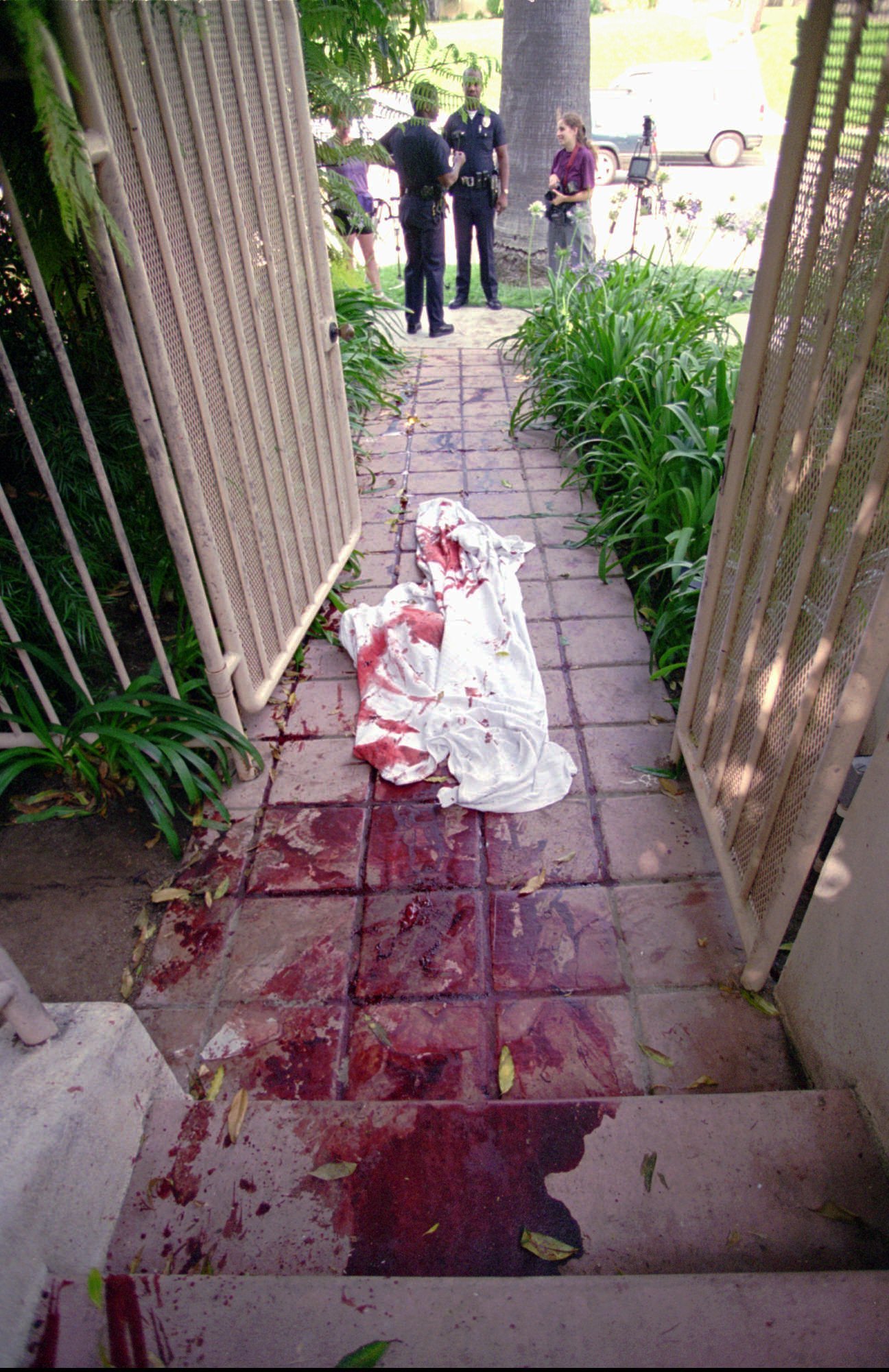
In this June 13, 1994 photo, blood-stained sheets are strewn along the entryway of the Los Angeles-area condominium of Nicole Brown Simpson after she and her friend Ronald Goldman were found dead. (AP Photo/Eric Draper)
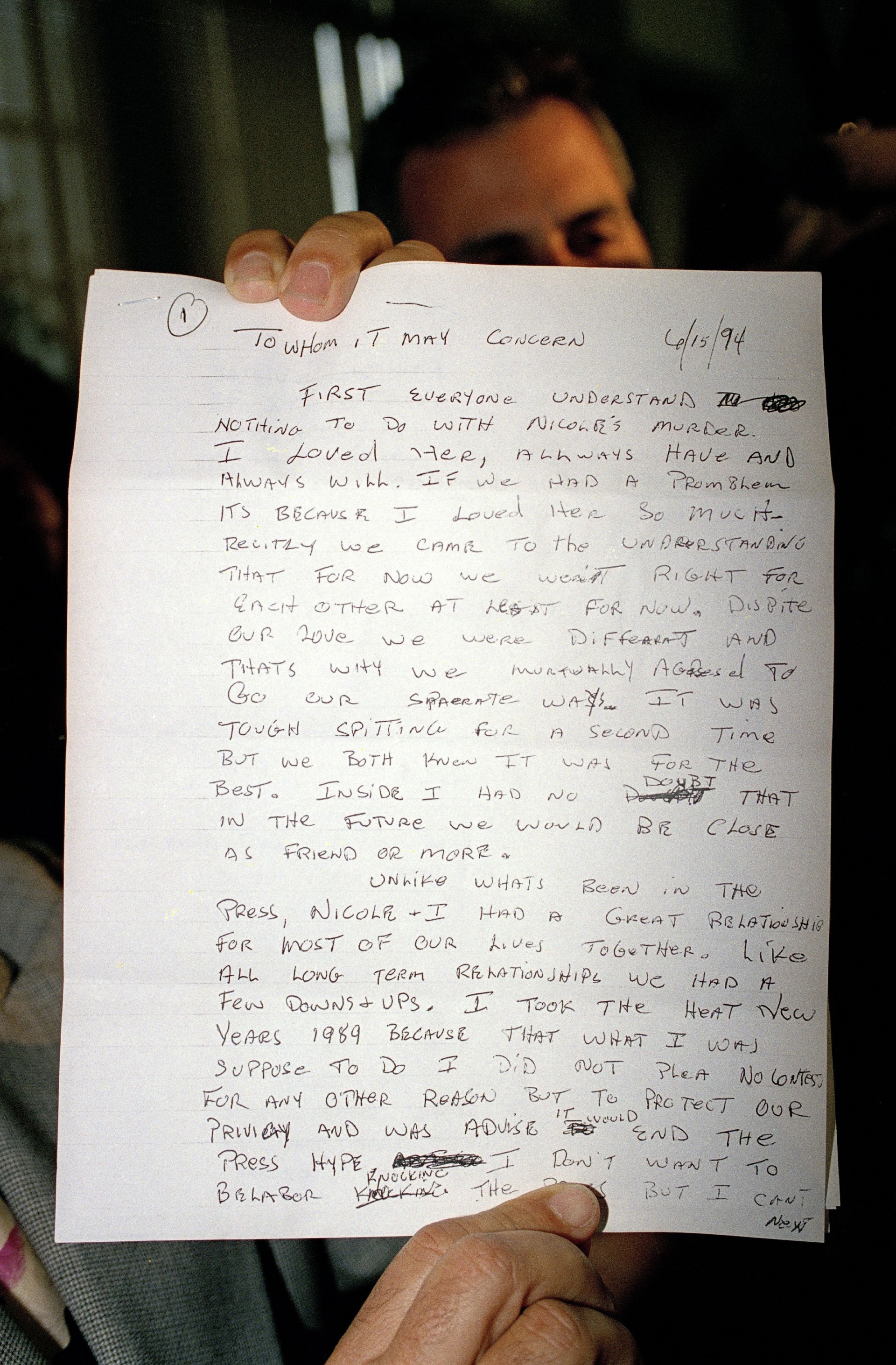
This is the first page of a four-page letter written by O.J. Simpson concerning charges against him in connection with the murders of his ex-wife Nicole and Ronald Goldman, shown on June 17, 1994. As of early evening, Simpson was leading authorities on in a car chase outside the Los Angeles city limits. (AP Photo/Mark J. Terrill)
Simpson was famously acquitted in 1995 by a Los Angeles jury in a case decried by many as a media circus which became known as the “Trial of the Century.”
The former football star and Hollywood actor’s acquittal was greeted with disbelief by many Americans, with opinion on the Black athlete’s guilt divided sharply along racial lines.
Simpson was later found liable for the deaths in a 1997 civil suit and ordered to pay damages to Goldman’s family totaling $33.5 million. The majority of that remained unpaid.
‘Waiting for the collision’
Simpson maintained his innocence and always denied he was trying to flee during the famous Bronco chase, even though he ignored a police deadline to turn himself in.
He told a LAPD detective over the phone during the slow-speed pursuit to “let them all know I wasn’t running,” but rather visiting Nicole’s grave.
A duffel bag containing Simpson’s passport and cash — as well as a gun — found by police in the car led many to question this, but was never submitted as evidence by the prosecution.
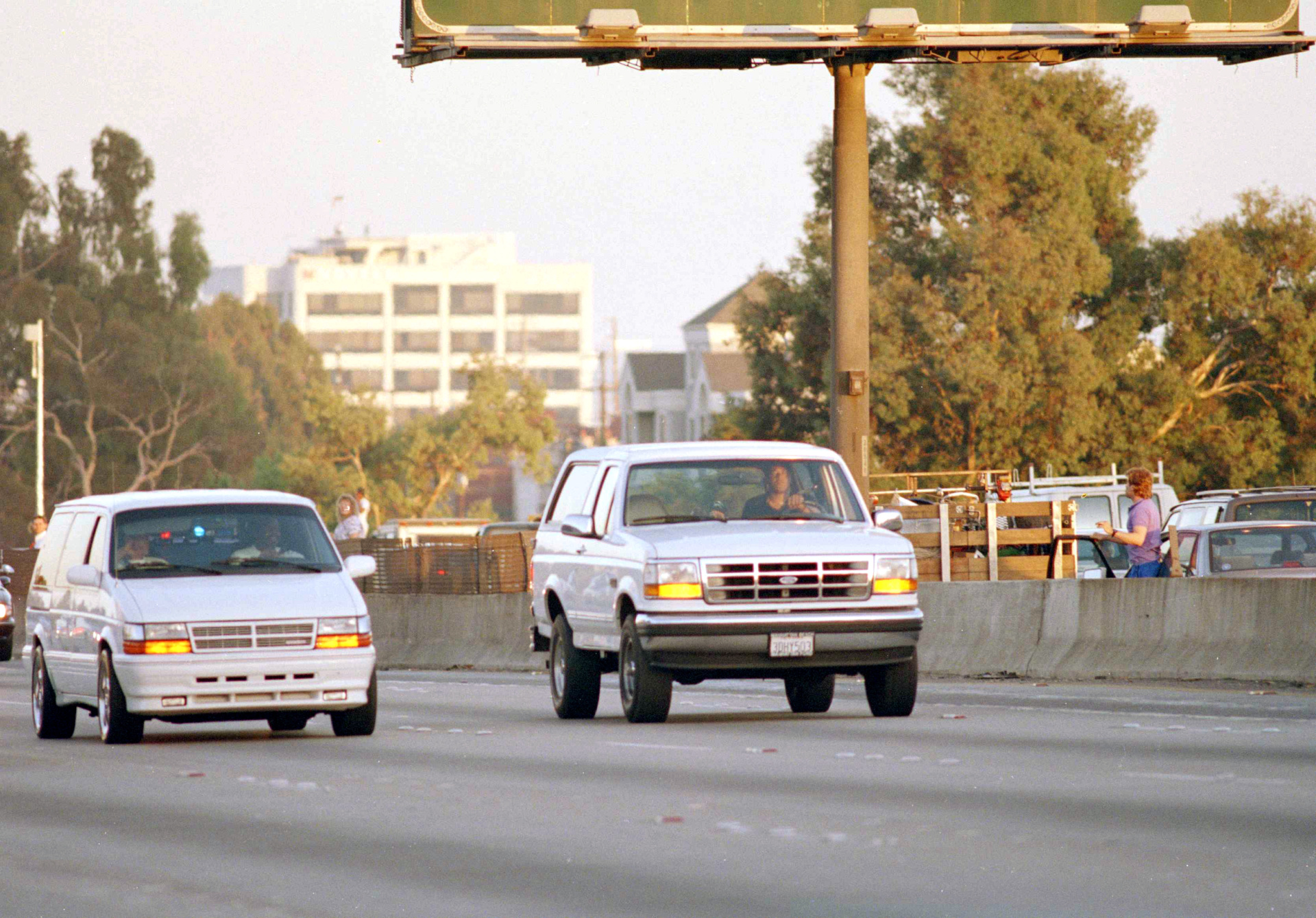
O.J. Simpson’s close friend Al Cowlings, at the wheel of a Ford Bronco with Simpson hiding, leads police on a two-county chase northbound 405 Freeway towards Simpson’s home, June 17, 1994, in Los Angeles. (AP Photo/Lois Bernstein)
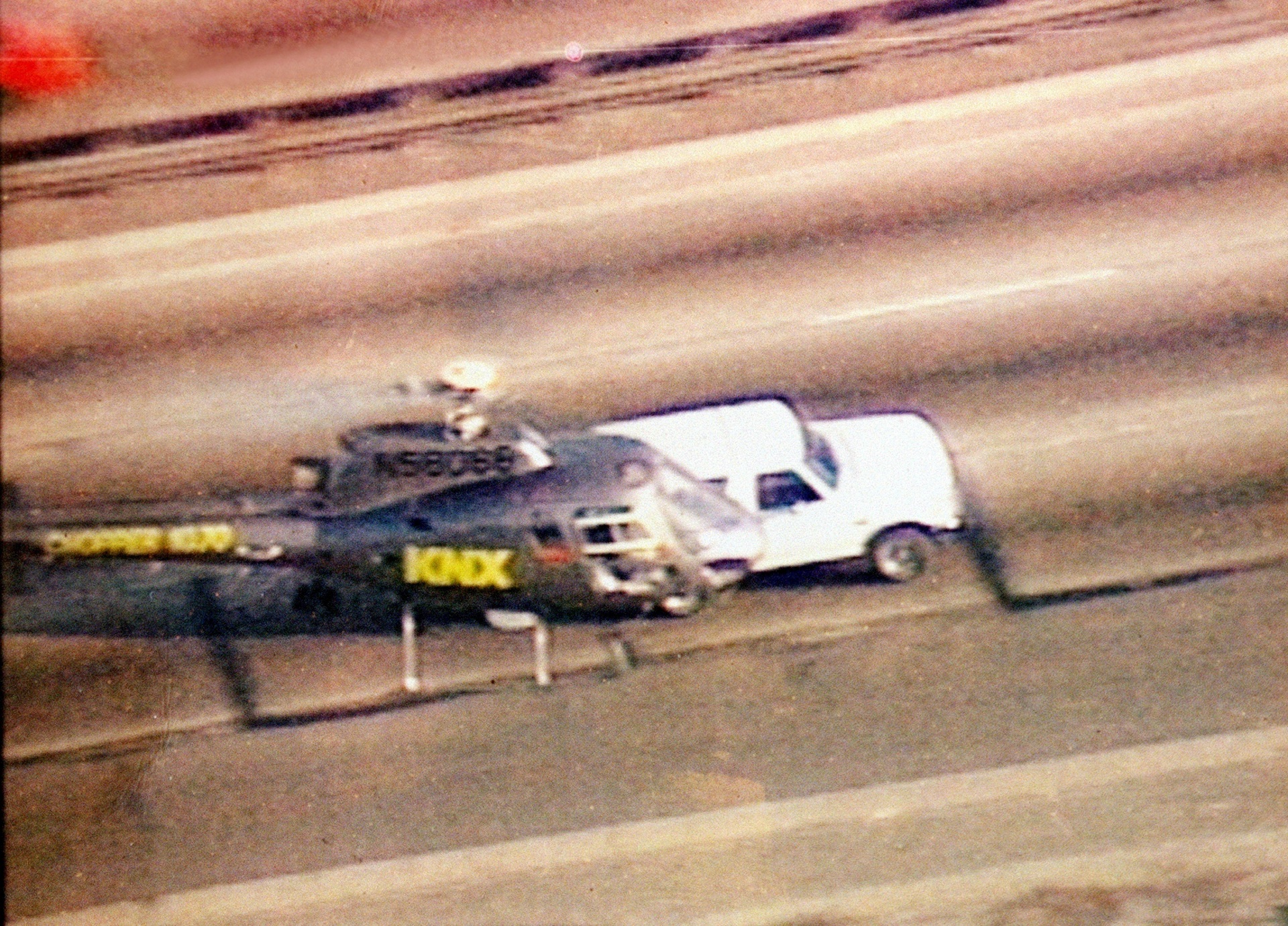
A Los Angeles news helicopter is seen hovering over O.J. Simpson’s white Ford Bronco during the infamous car chase. (Didier PAZERY/Gamma-Rapho via Getty Images)
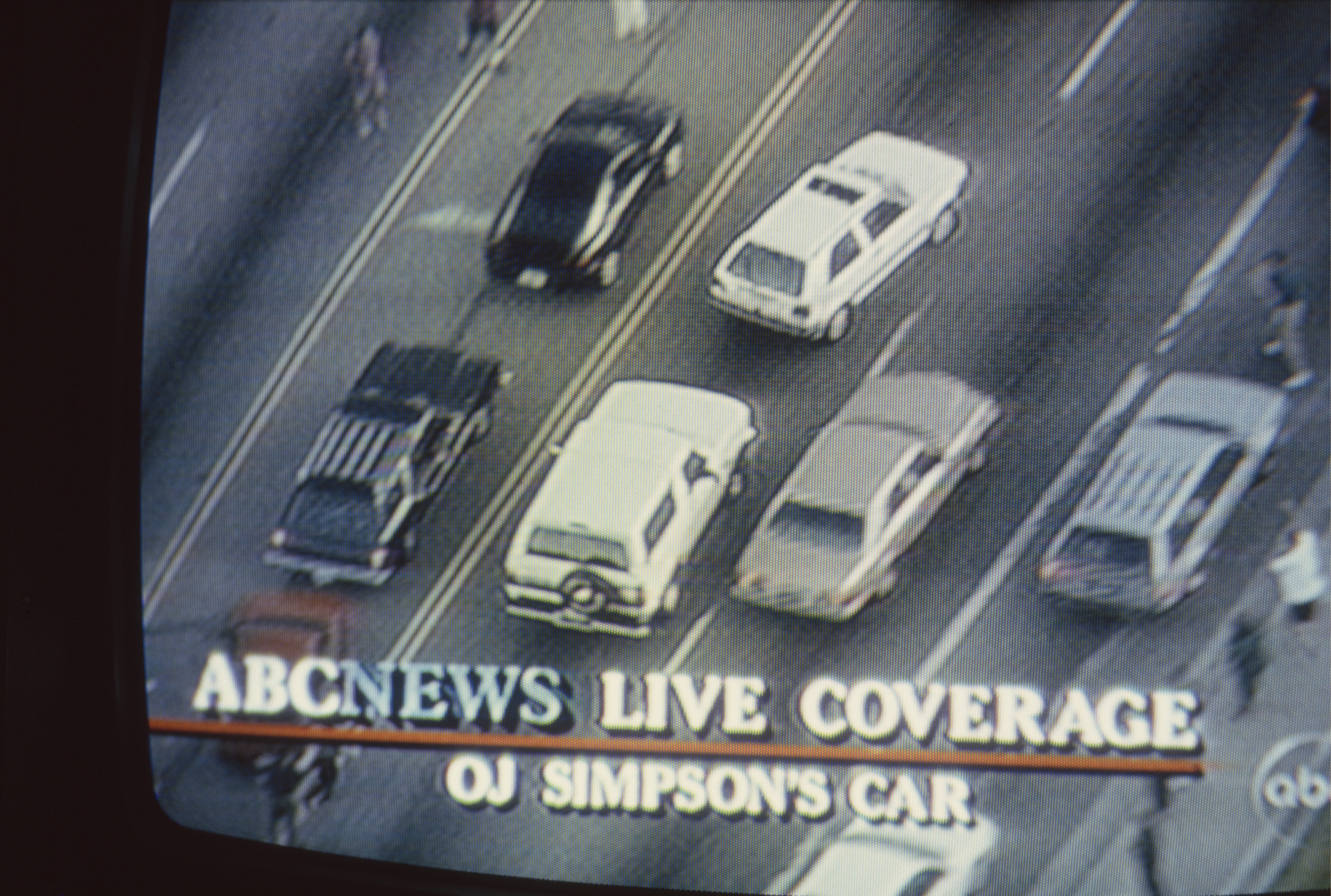
A television screen image of the ABC News live coverage of O.J. Simpson’s car chase. (Rick Maiman/Sygma via Getty Images)
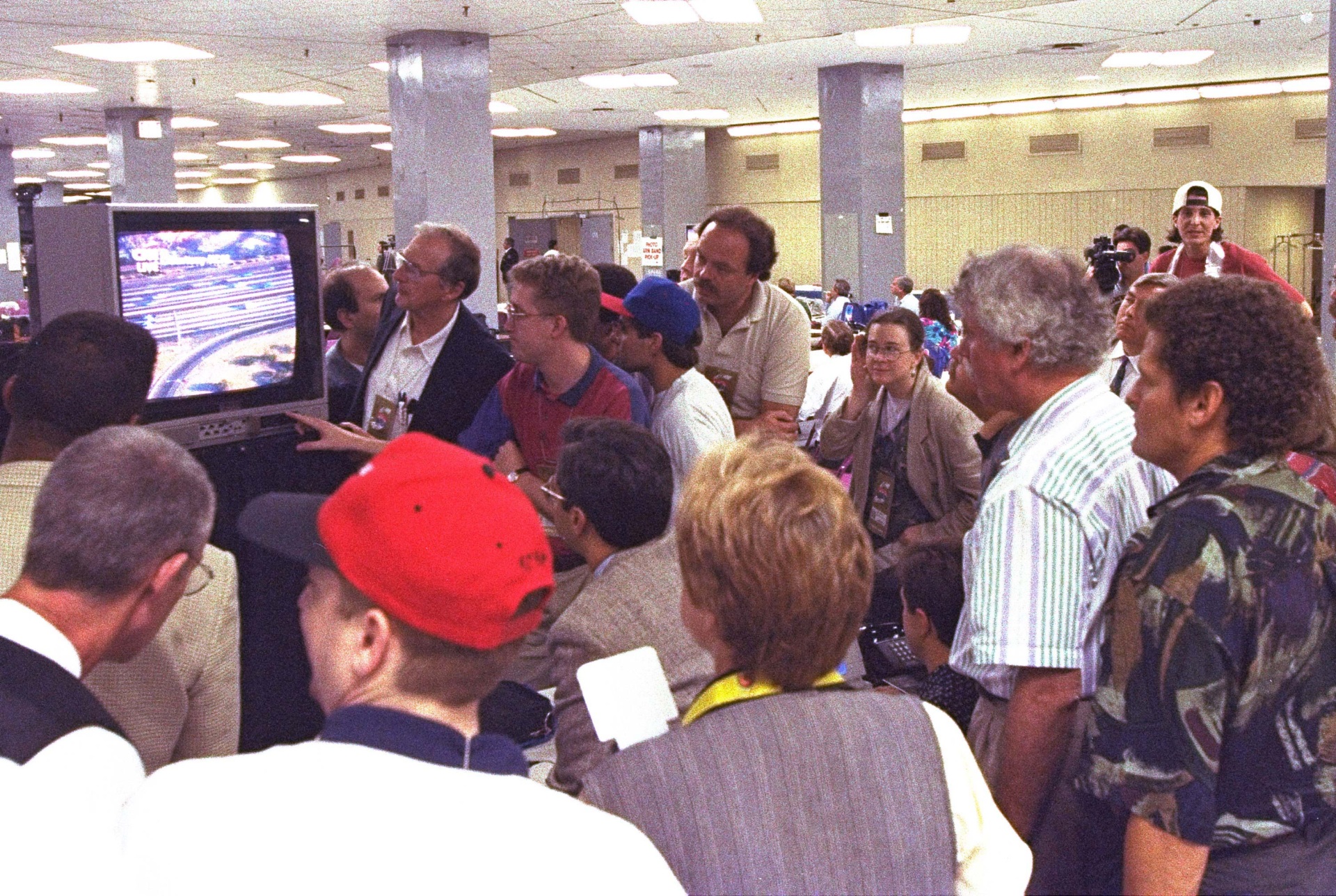
Members of the news media watch live television coverage of the O.J. Simpson driving on Los Angeles freeways during game five of the NBA finals Friday night, June 17, 1994, at New York’s Madison Square Garden. (AP Photo/Ron Frehm)

California Highway Patrol chase Al Cowlings, driving, and O.J. Simpson, hiding in rear of white Bronco on the 91 Freeway, just West of the I5 freeway. The chase ended in Simpson’s arrest at his Brentwood home. (Allen J. Schaben/Los Angeles Times via Getty Images)
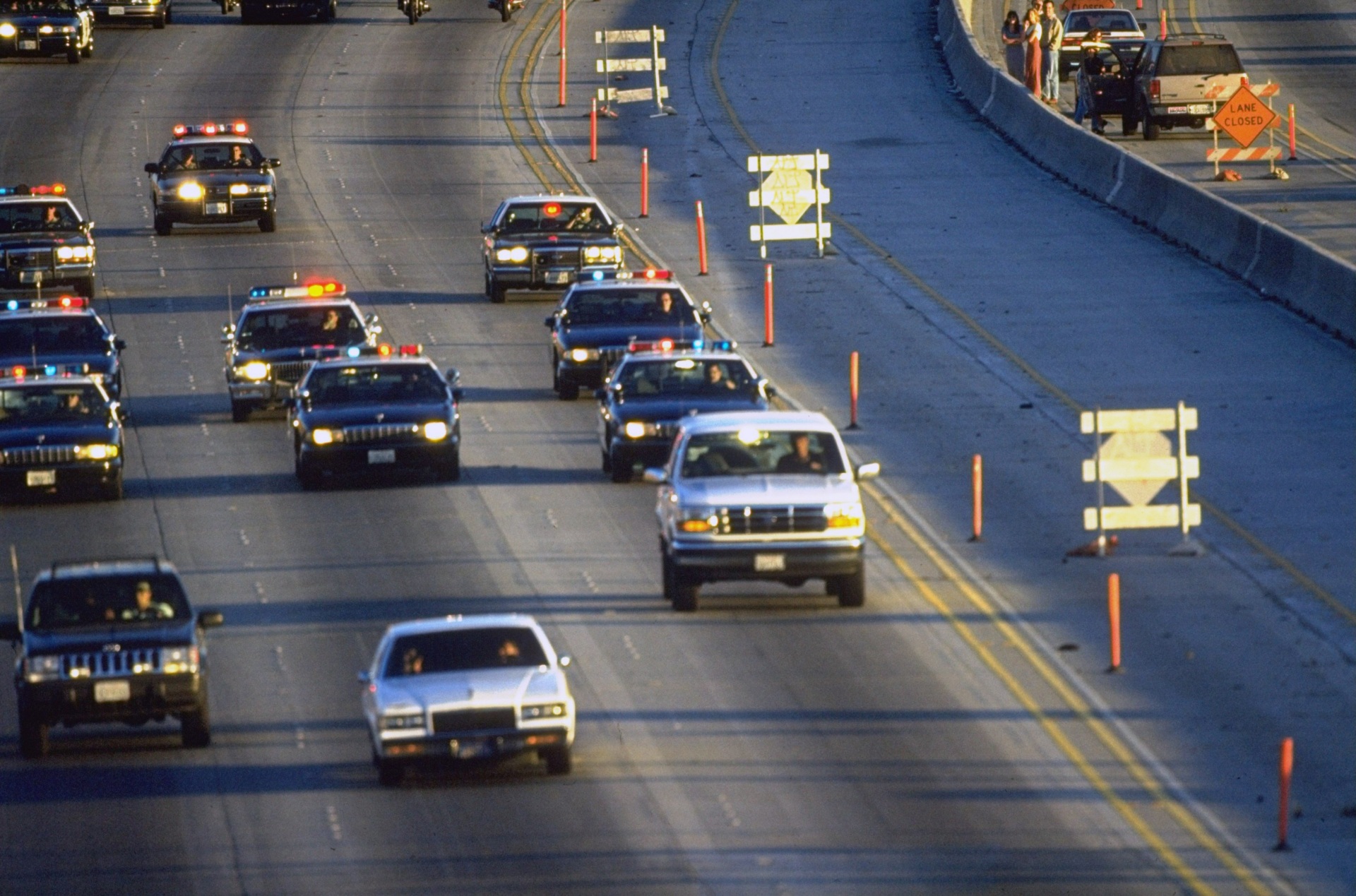
View of white Ford Bronco being driven by Al Cowling on Interstate 405. Former NFL running back O.J. Simpson hiding in the car after failing to turn himself in for the murder of his ex-wife. (Peter Read Miller/Sports Illustrated via Getty Images)
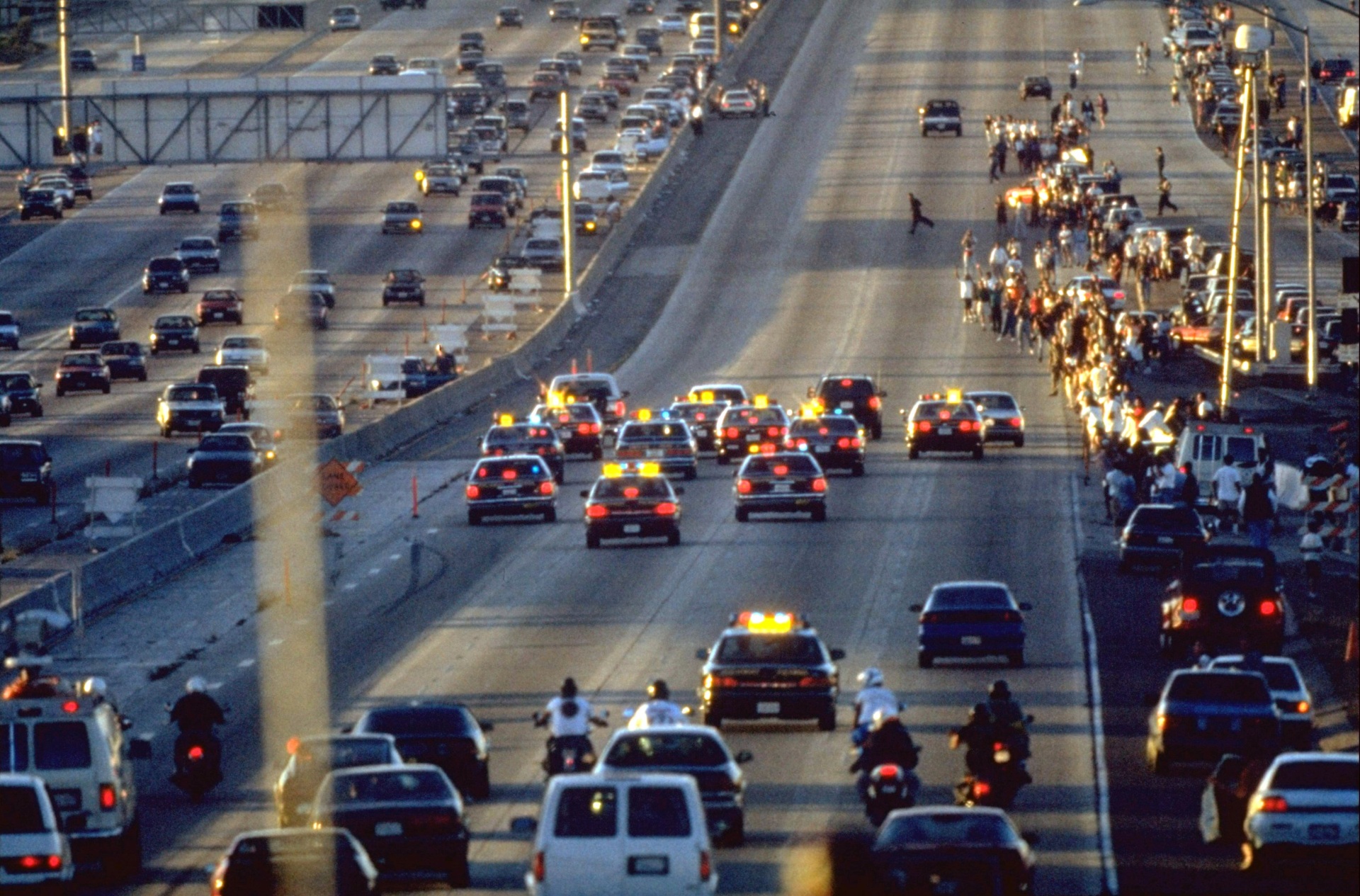
View of the crowds beginning to assemble on either side of the freeway as the police zero in on O.J. Simpson’s white Ford Bronco. (Peter Read Miller /Sports Illustrated via Getty Images)
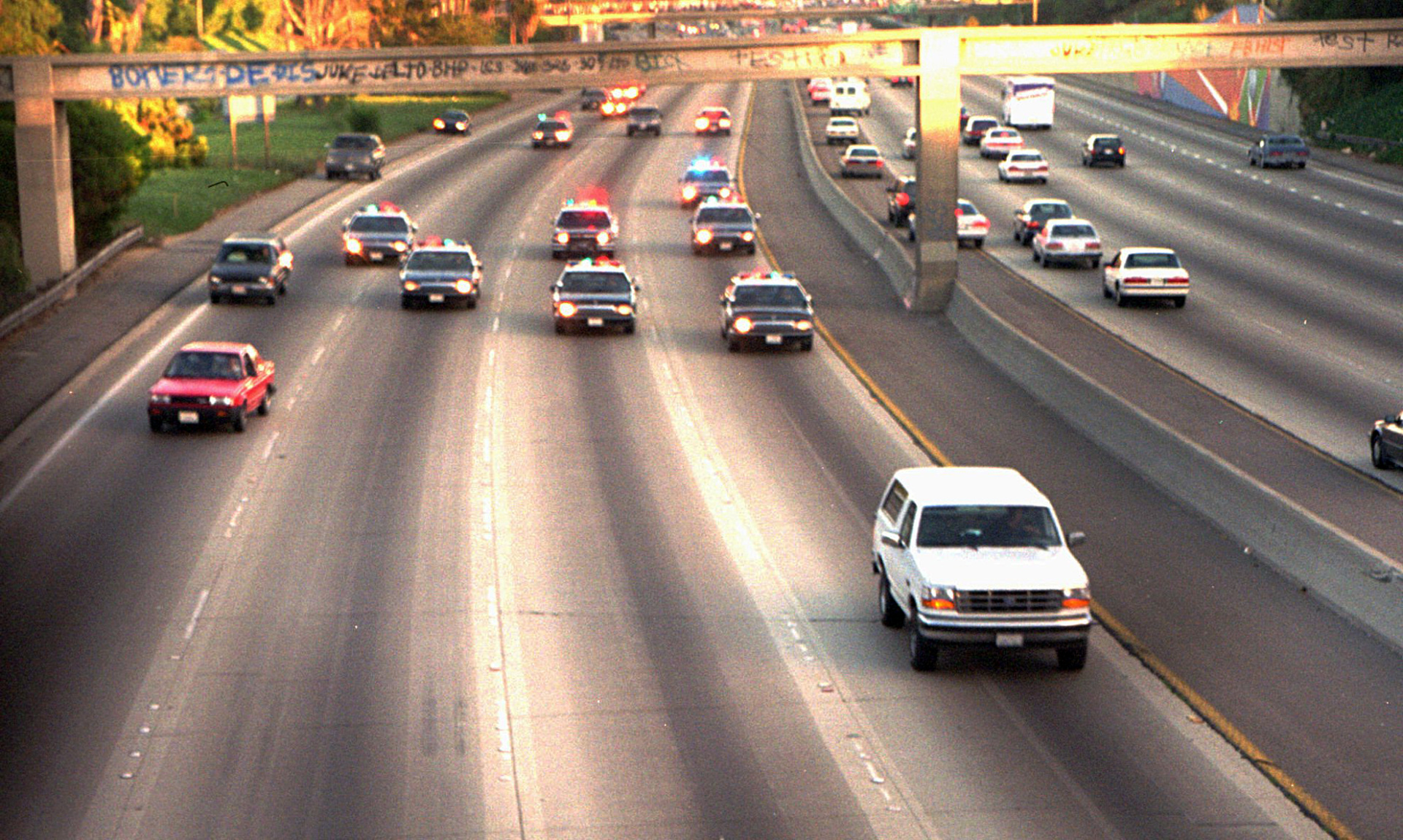
The white Ford Bronco driven by Al Cowlings with O.J. Simpson is trailed by Los Angeles police cars as it travels on a freeway in Los Angeles. (AP Photo/Joseph Villarin)

Motorists stop and wave as police cars pursue the white Ford Bronco (right) driven by Al Cowlings, carrying fugitive murder suspect O.J. Simpson, on a 90-minute slow-speed car chase on June 17, 1994 on the 405 freeway in Los Angeles, California. (Jean-Marc Giboux/Liaison)
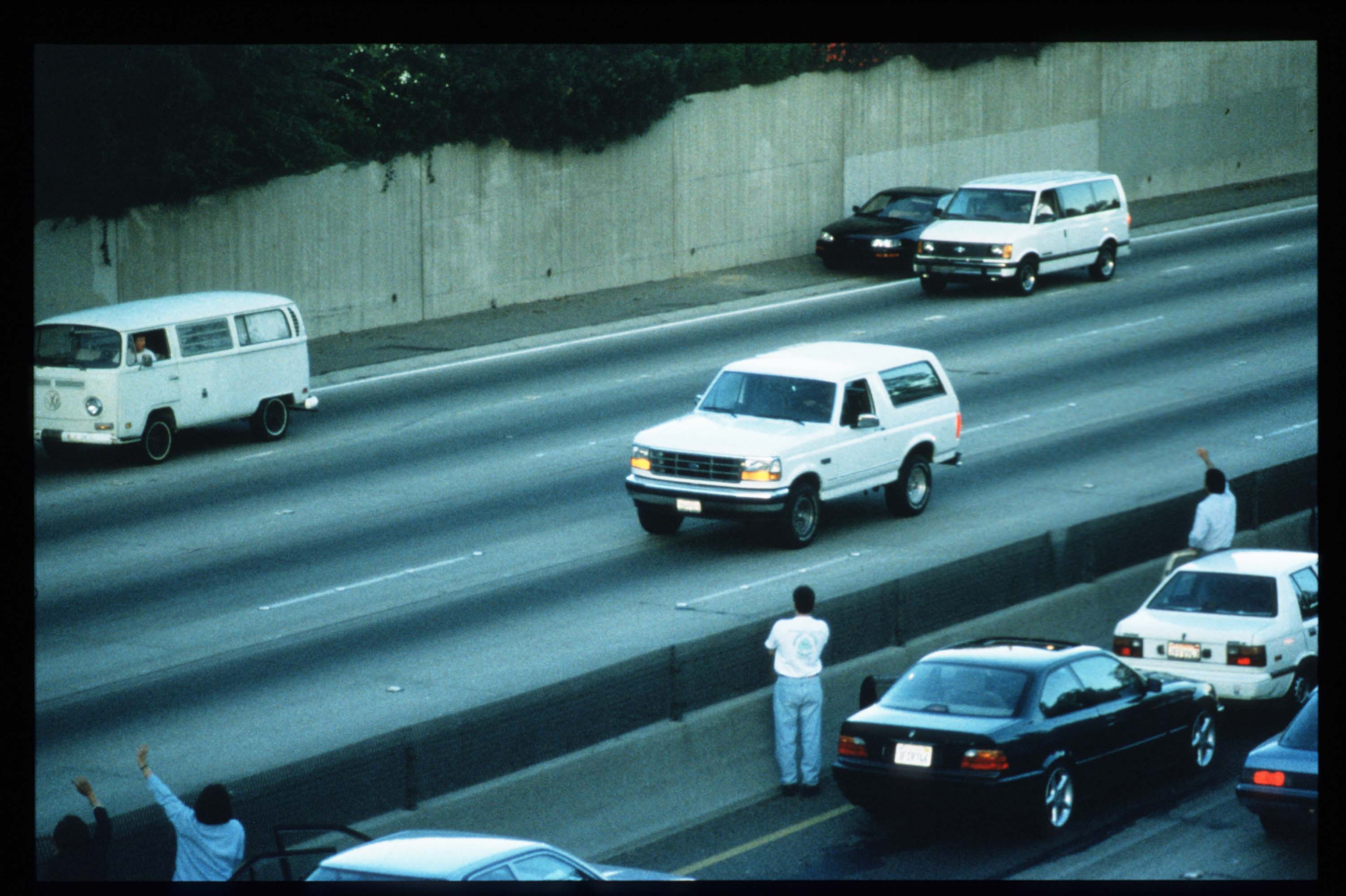
Motorists wave and watch as as police cars pursue O.J. Simpson’s white Ford Bronco on June 17, 1994 on the 405 freeway in Los Angeles, California. (Jean-Marc Giboux/Liaison)

The white Ford Bronco, driven by Al Cowlings, carrying fugitive murder suspect O.J. Simpson, during a 90-minute slow-speed car chase June 17, 1994 on the 405 freeway in Los Angeles, California. (Ted Soqui/Sygma via Getty Images)

Motorists wave signs in support of O.J. Simpson as police cars pursue the white Ford Bronco driven by Al Cowlings, carrying fugitive murder suspect O.J. Simpson, on a 90-minute slow-speed car chase June 17, 1994 on the 405 freeway in Los Angeles, California. (Vinnie Zuffante/Getty Images)
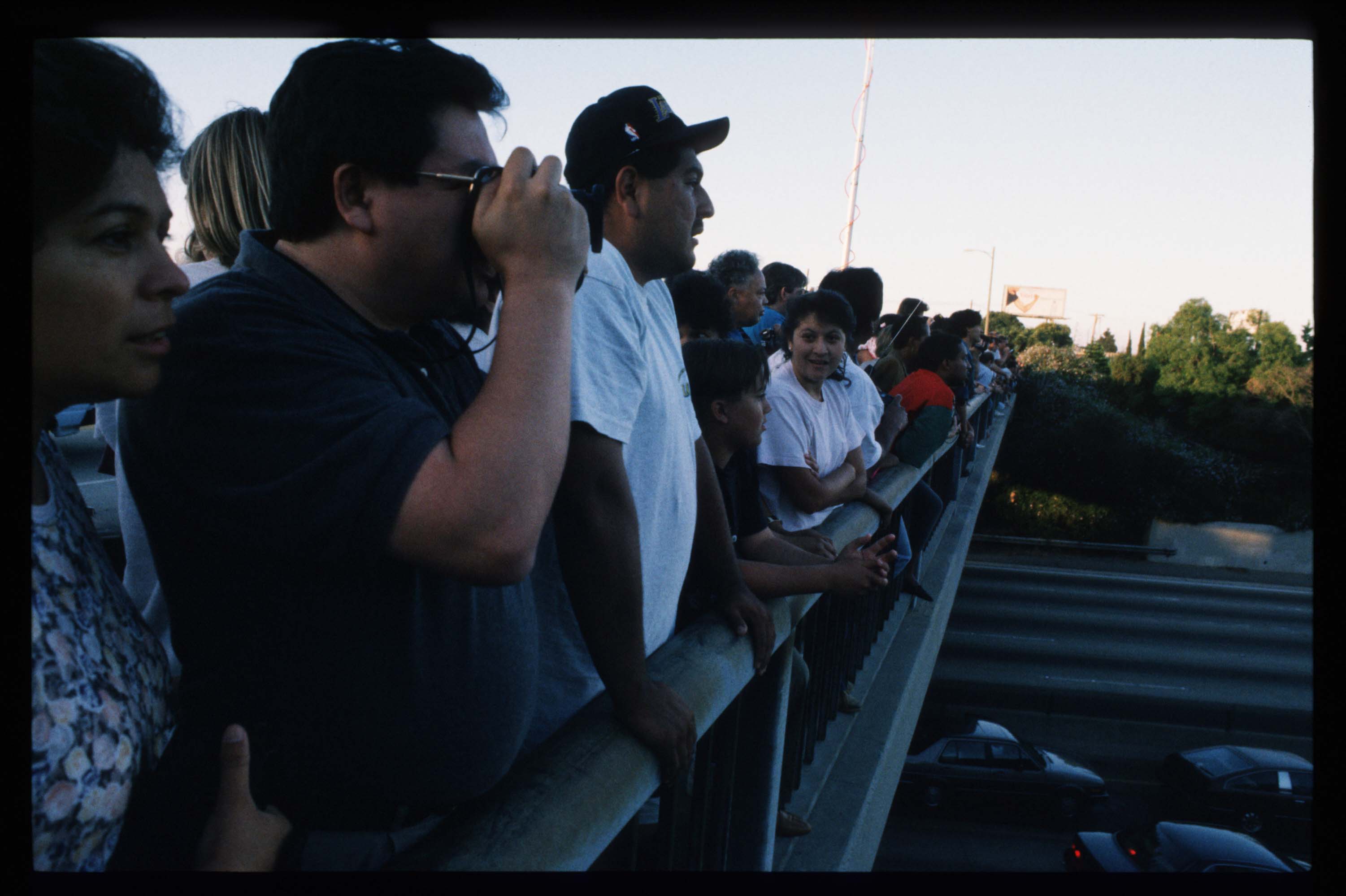
People watch from the freeway overpass as police cars pursue a white Ford Bronco carrying fugitive murder suspect O.J. Simpson on a 90-minute slow-speed car chase June 17, 1994, on the 405 freeway in Los Angeles, California. (Jean-Marc Giboux/Liaison)

Police cars pursue the white Ford Bronco driven by Al Cowlings carrying fugitive murder suspect O.J. Simpson on June 17, 1994 on the 405 freeway in Los Angeles, California. Cowlings eventually drove Simpson back to his home in Brentwood to turn himself in to the police. (Vinnie Zuffante/Getty Images)
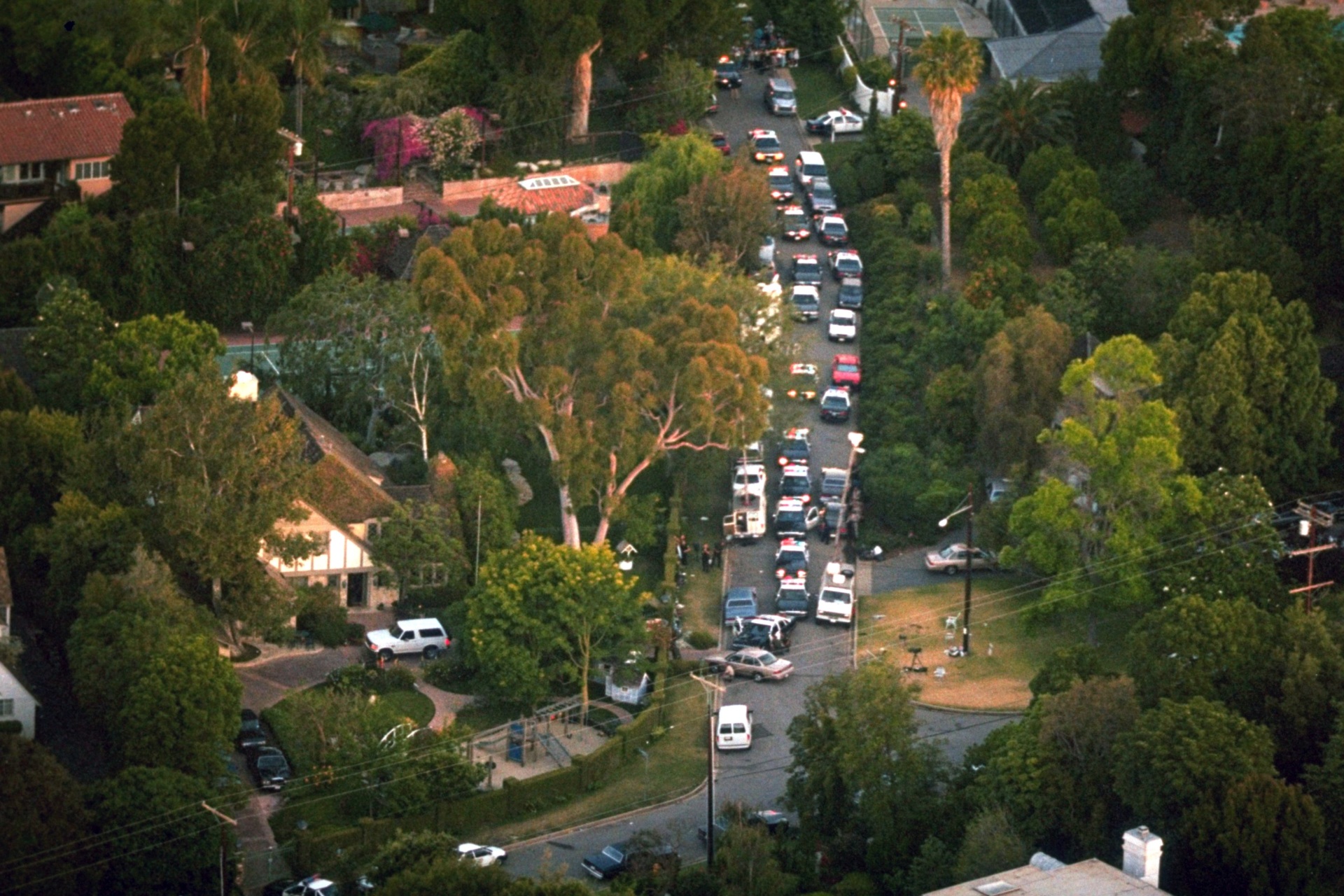
Aerial view shot from helicopter of home of O.J. Simpson in Brentwood, California, as the white Ford Bronco is finally parked in driveway and police cars are parked outside. Simpson returned to his house after failing to turn himself in for the murder of his ex-wife and fleeing by car. (Richard Mackson /Sports Illustrated via Getty Images)
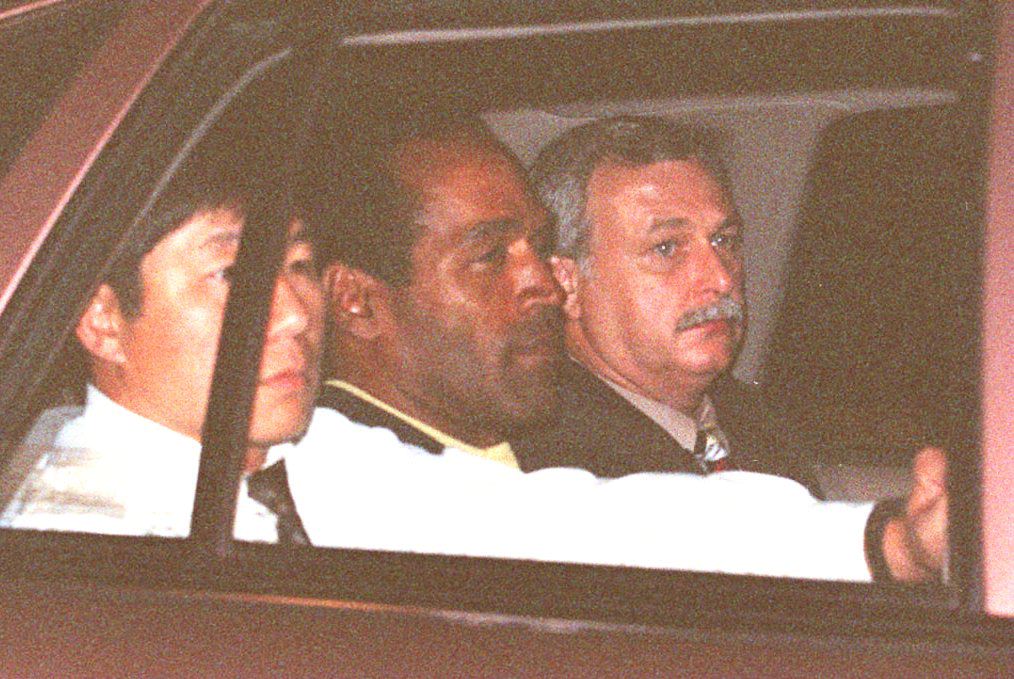
Ex-football superstar O.J. Simpson (center) is accompanied by two LAPD detectives to Parker Center after he was arrested following a 90 minute highway chase on June 17, 1994. Simpson has been charged with the murder of his ex-wife Nicole Simpson and her friend Ronald Goldman who were brutally slain late 12 June 1994. (VINCE BUCCI/AFP via Getty Images)
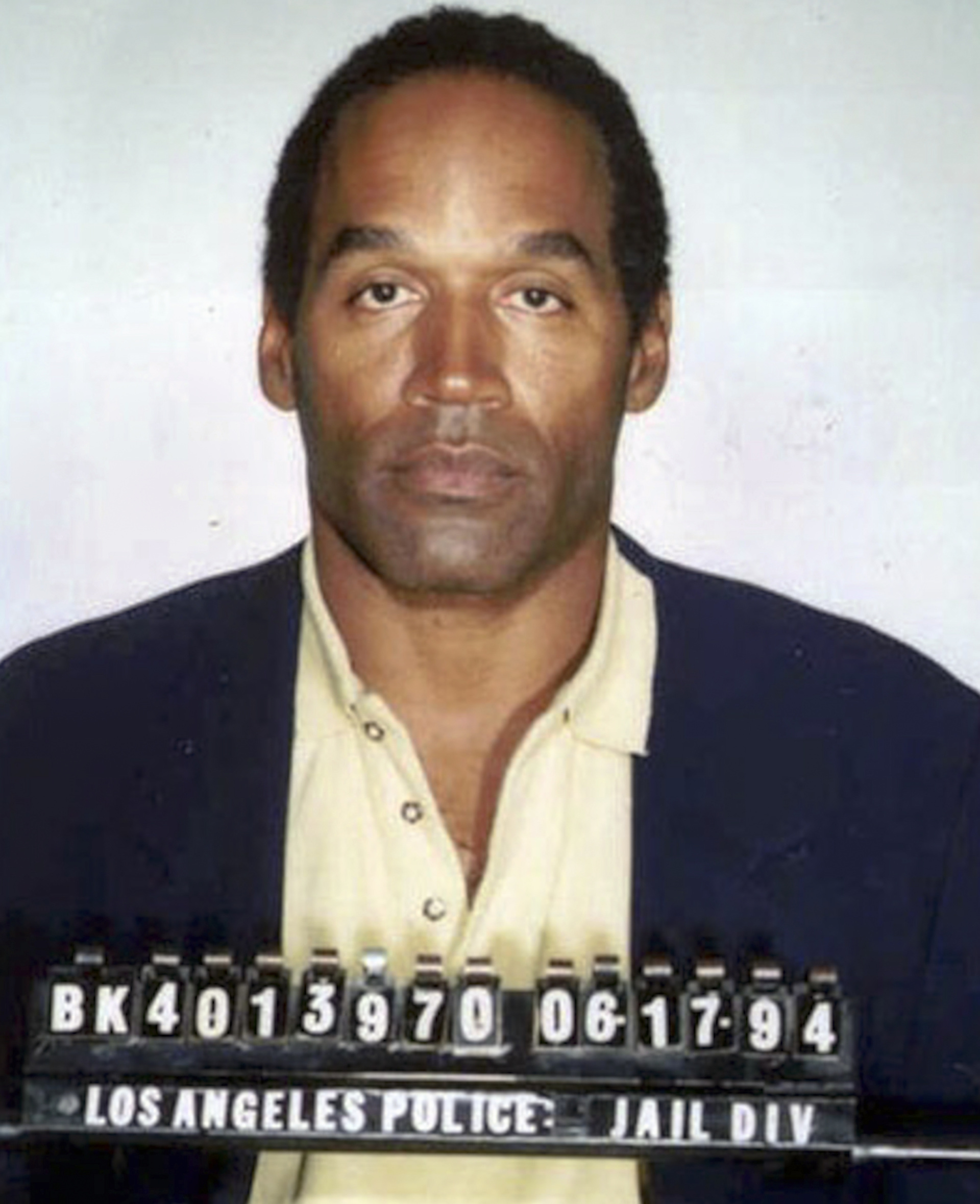
O.J. Simpson’s mug shot following his arrest in Los Angeles, California, on June 17, 1994. (Kypros/Getty Images)
For Geoffrey Alpert, a professor at University of South Carolina who studies police chases, Simpson’s celebrity heightened a deep-rooted fascination with the idea of a dangerous pursuit.
“We’re waiting for the collision. No one wants anyone to die but we certainly like to see some mayhem,” he told AFP in 2019, comparing televised chases to wildly popular Nascar races.
“The media has a broader fascination with that kind of event in the States than anywhere else,” he added.
“It goes back to the days of horseback riding when someone would rob a bank and the sheriff would jump on his horse and chase him.”
The car itself — owned by Simpson’s friend Al Cowlings, who was driving during the pursuit — is on display in a Tennessee crime museum.
A Los Angeles tour company reportedly explored the idea of offering rides in the vehicle up and down the same freeways.
To the disappointment of fans who gathered on overpasses along the chase route that day with signs saying “Run O.J. Run” and “Go O.J.,” Simpson eventually surrendered.

Fred Goldman, center, is hugged by his attorney Daniel Petrocelli, left, and daughter Kim, as his wife Patti, right, looks on, following the verdict in the wrongful death civil suit against O.J. Simpson in Santa Monica, California, on February 4, 1997. (AP Photo/Nick Ut)
But for Goldman, that did not lead to any closure.
Simpson was released from jail in 2017 after serving nine years behind bars for an unrelated armed robbery. At the time of his death this week, he was living in Las Vegas, where he was regularly spotted playing golf.
The AFP contributed to this story.

COMMENTS
Please let us know if you're having issues with commenting.